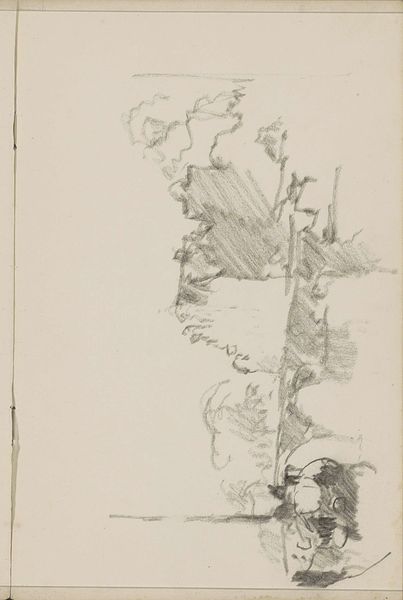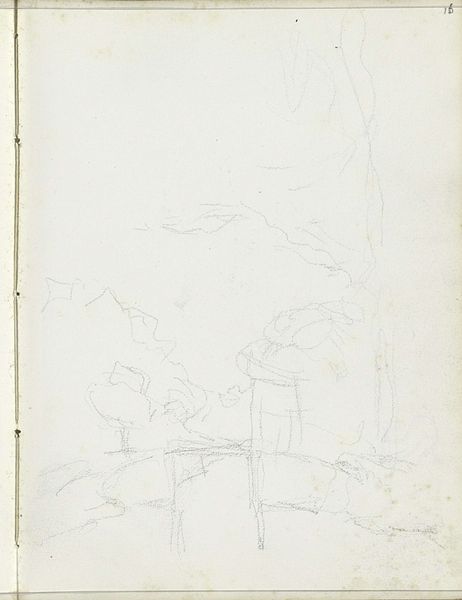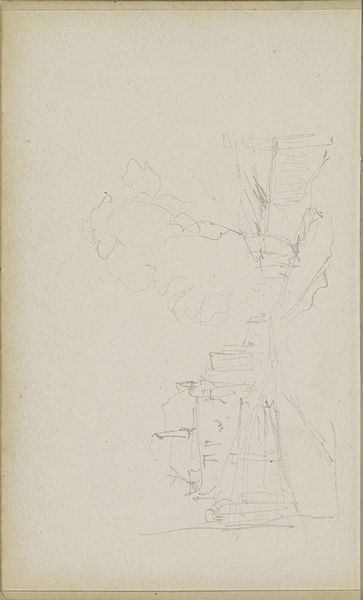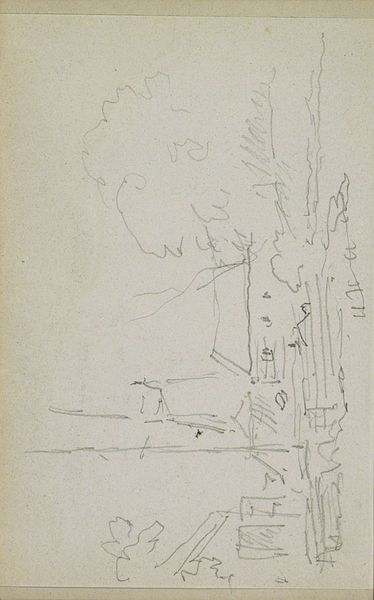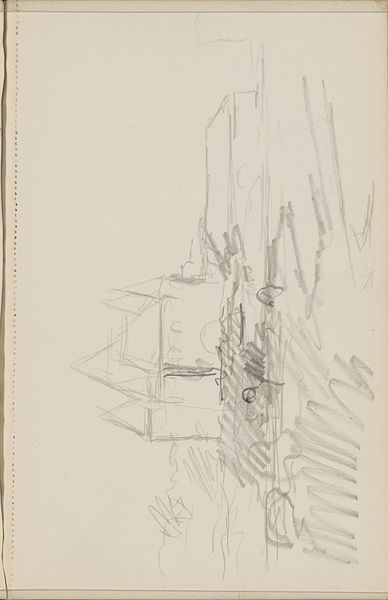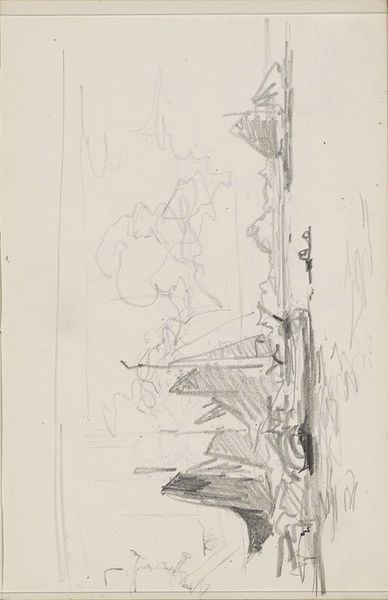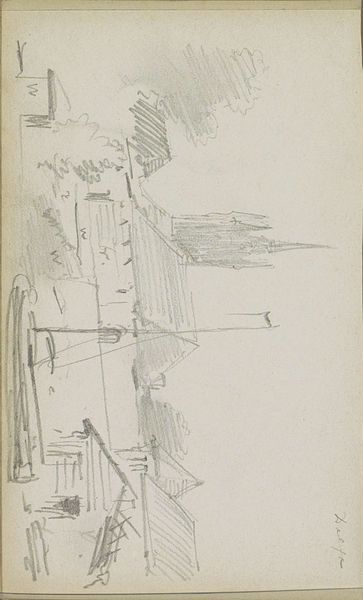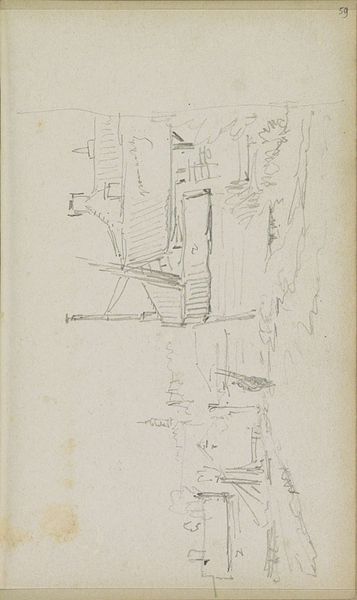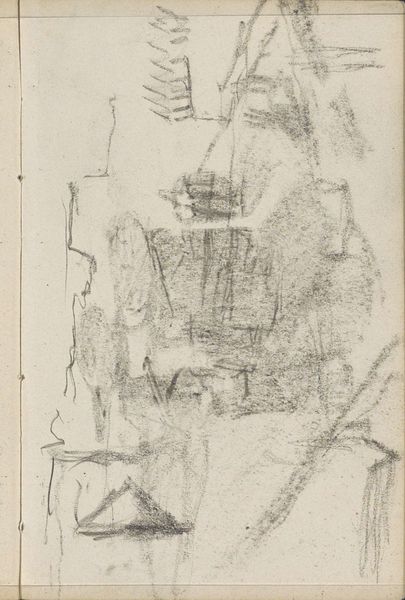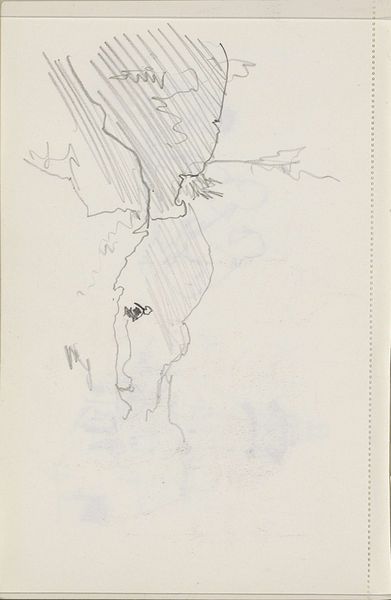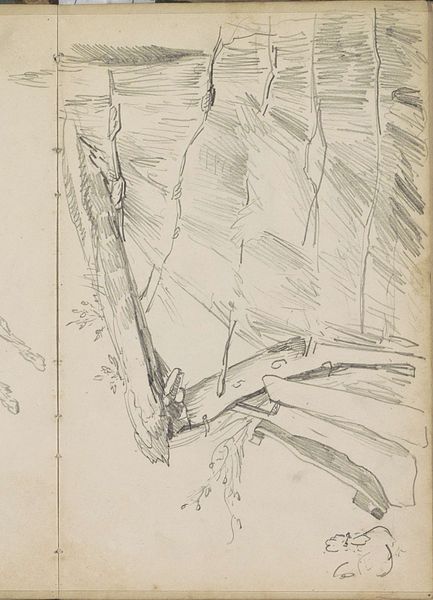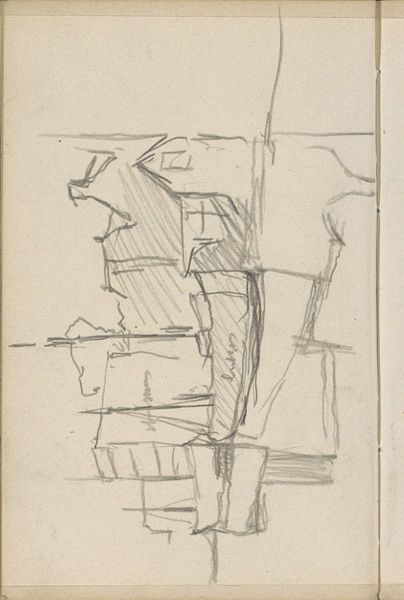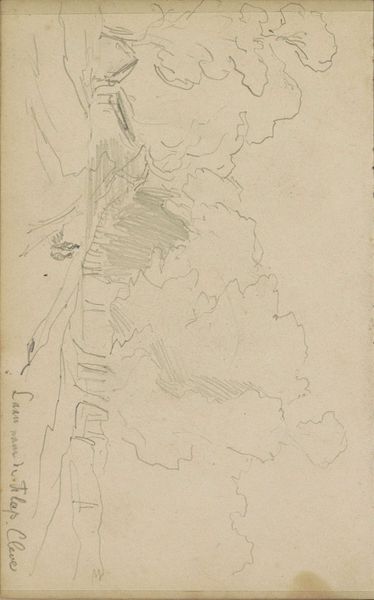
drawing, paper, pencil
drawing
pencil sketch
landscape
paper
pencil
Copyright: Rijks Museum: Open Domain
Editor: Here we have Reijer Stolk's "Zeilschip," a pencil drawing on paper, made sometime between 1906 and 1945. It looks like a preliminary sketch of a sailboat. What do you see in this piece? Curator: Immediately, I'm drawn to the materiality. Look at the paper: likely cheap, mass-produced stock, given the probable time period and the artist's relative obscurity. The pencil work itself is hurried, functional. This wasn’t meant for display. Editor: So, it's more about the process than the product? Curator: Precisely. Consider the social context. Why sketch a sailboat? Was Stolk near the water? Was it a common sight for the working class? These sketches likely served a function, a means to an end in the production of something else. Editor: Possibly studies for a painting, maybe? Curator: Maybe. Or perhaps for prints, illustrations… material for sale, accessible art for a wider audience. We should research Stolk's overall output. Were the images reproduced? Who bought them? That could tell us more about his market, the cycle of production, labor, and consumption at play. Editor: I see. So it's not about the inherent beauty, but the journey the materials took and the context they existed in? Curator: Exactly. The labor embedded in these pencil strokes, the commodification of the image, the social implications of artistic production – that's what truly interests me. It shifts the focus from the genius of the artist to the art as a social object. Editor: That really reframes how I look at simple sketches. Thanks, I learned a lot. Curator: And I think examining these production and consumption elements opens up interesting questions about art history.
Comments
No comments
Be the first to comment and join the conversation on the ultimate creative platform.
